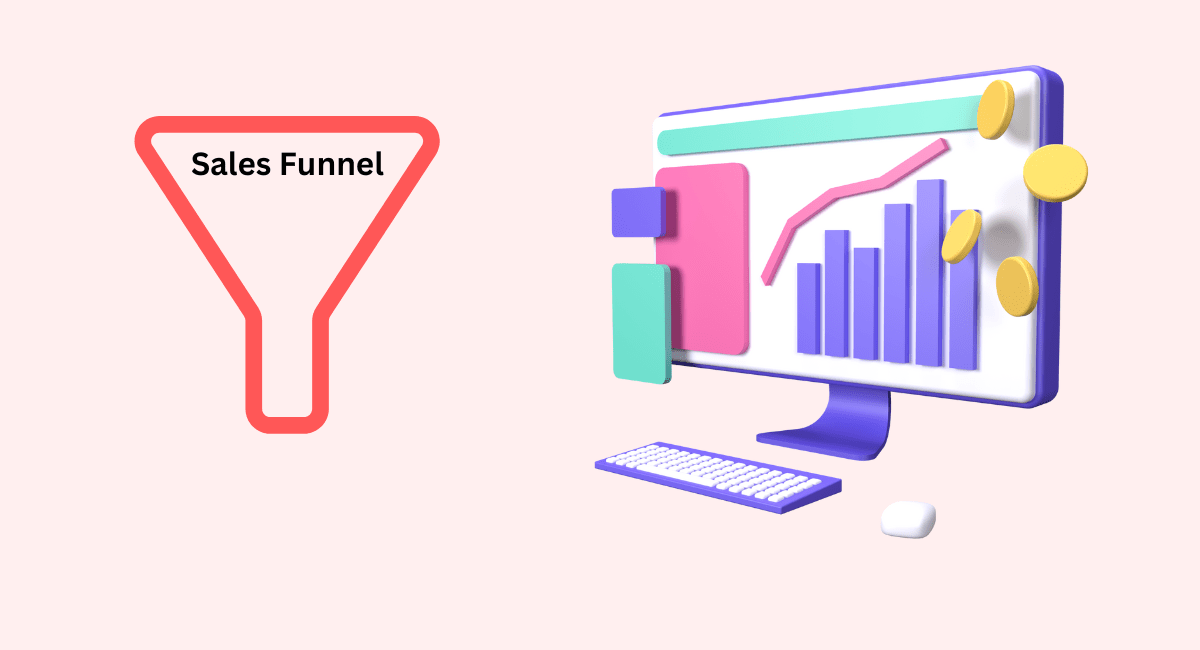In this article we have featured What is a Sales Funnel and Why Should I Care? You’ve probably heard the term “sales funnel” before, but you may not be entirely sure what it means. A sales funnel is a process that businesses use to turn leads into customers. It’s called a “funnel” because it’s designed to narrow down your list of potential customers by weeding out those who are not interested or are not ready to buy.
The sales funnel has four main stages: Awareness, Interest, Decision, and Action. In the Awareness stage, your goal is to get the attention of potential customers. This is usually done through marketing campaigns such as social media, search engine optimization (SEO), or pay-per-click (PPC) advertising.
In the Interest stage, you want to pique the interest of your potential customers by providing them with valuable content that addresses their needs and helps them see how your product or service can solve their problems.
In the Decision stage, you need to help your potential customers make a decision by providing them with all the information they need to know about your product or service, such as pricing, features, and benefits.
Finally, in the Action stage, you need to provide your potential customers with a clear call-to-action (CTA) that will encourage them to take the next step, such as making a purchase or signing up for a free trial.

Table of Contents
sales funnel stages
A sales funnel can be a helpful tool for any business that wants to increase its conversion rate (the number of leads that become customers). By understanding what a sales funnel is and how it works, you can start implementing it in your own business and seeing results!
There are different steps that a lead will go through during their buyer’s journey before they make a purchase. These steps are called the sales funnel stages, and they are:
- The Top of the Funnel (TOFU)
- The Middle of the Funnel (MOFU)
- The Bottom of the Funnel (BOFU).
TOFU Stage
The TOFU stage is when someone becomes aware that they have a problem or need that your product or service can solve. This is where your job as a marketer begins.
You need to create content (e.g., blog posts, social media posts, etc.) that speaks to the pain points of your target audience and offers them solutions in the form of your product or service. It’s important to note that at this stage, people are not yet ready to buy anything; they’re merely looking for information about their problem or need.
MOFU Stage
MOFU Stage Once someone has been exposed to your brand and knows that you offer solutions to their problem, they enter the MOFU stage.
At this point, they are starting to compare you with other brands in order to decide which one is best suited for them. This is where lead nurturing comes into play—you need content that further addresses their pain points and showcases the unique features and benefits of your product or service.
You can use things like case studies, customer testimonials, free trials/demos, etc., to help push leads further down the sales funnel toward conversion.

BOFU Stage
BOFU Stage Finally, we have reached the bottom of the funnel! Leads at this stage are now ready to buy but may still have some lingering doubts or concerns about your product/service.
It’s important to address these doubts or concerns head-on with content like guarantees, return policy info, FAQs, etc., so there are no barriers between the lead and conversion. Once you’ve overcome any final objections, it’s time for the lead to take action and convert into a paying customer!
Implementing a Sales Funnel
Now that you understand what a sales funnel is and why it’s important, let’s talk about how you can start implementing one in your business.
Creating attractive lead magnets: In order to get people into your sales funnel, you need to offer something in exchange for their contact information.
This is known as a lead magnet. Your lead magnet should be something that is valuable and relevant to your target audience. For example, if you’re selling kitchen appliances, you could offer a free e-book on recipes or cooking tips.
Developing an effective CTA: Once you have someone’s contact information, it’s time to move them further down the sales funnel with an effective CTA.
Your CTA should be clear and concise; it should tell people exactly what they need to do next and make it easy for them to do it. For example, if you want people to sign up for your free e-book, your CTA could simply say “Click here to download our free e-book.”
Nurturing your leads: Just because someone has given you their contact information does not mean they are ready to buy from you yet.
In order for someone to move from being a lead to being a customer, they need to be nurtured over time with valuable content that builds trust and credibility.
This can be done through email marketing campaigns, blog posts, or even social media posts—anything that will keep your business top of mind until they are ready to buy.
Measuring results: The final step in creating an effective sales funnel is measuring results so that you can fine-tune your strategy over time.
There are many different metrics you can track, but some of the most important ones include conversion rate (the number of leads that become customers), cost per lead (the amount of money you spend on acquiring each lead), and customer lifetime value (the total amount of money each customer spends with your business over time). By tracking these metrics closely, you can make changes to your sales funnel as needed in order to maximize results!
Quick Links:
Conclusion:
A sales funnel is a process businesses use to turn leads into customers. It has four main stages: Awareness, Interest Decision, and Action. Implementing a well-thought sales funnel can be very beneficial increase conversion rates. To learn more about developing an effective sales funnel strategy please read our blog post. Thanks for taking the time to learn more about this topic!


